
Leopard wood is another treasure from the rainforest. It’s a heavy, dark reddish-brown wood marked with the speckled or lacy figure. This figure comes from the trees’ wide medullary rays. All trees have these rays that radiate from the central pith; they have to do with the way trees store nutrients. In leopard wood, these rays happen to be particularly distinct.
You can see them most clearly in the end grain where they appear as light brown or gray lines. Several other wood species display similar figure including lacewood, and the Australian native silky oak (which is also sold as leopard wood on occasion). Of the three, leopard wood (Roupala montana or R. brasiliense) is the darkest and heaviest.
Where the wood comes from
The trees grow throughout Central and northern South America. At full maturity, they can reach 100 feet in height and close to 3 feet in diameter. Leopardwood is widely available through exotic wood dealers. As of this writing, it is not on either the CITES list or the IUCN Red List as being endangered.
History in woodworking
Leopardwood is a relative newcomer to the woodworking scene. While our woodworking ancestors seem to have overlooked it, contemporary makers have incorporated the bespeckled boards into everything from boxes and desktops to electric guitar bodies. It is also available as a veneer on plywood. These sheets have the type of uniform yet exotic patterns that architects often specify for boardroom paneling and cabinetry.
Selecting the best stock
هذه القصة مأخوذة من طبعة August-September 2020 من Woodcraft Magazine.
ابدأ النسخة التجريبية المجانية من Magzter GOLD لمدة 7 أيام للوصول إلى آلاف القصص المتميزة المنسقة وأكثر من 9,000 مجلة وصحيفة.
بالفعل مشترك ? تسجيل الدخول
هذه القصة مأخوذة من طبعة August-September 2020 من Woodcraft Magazine.
ابدأ النسخة التجريبية المجانية من Magzter GOLD لمدة 7 أيام للوصول إلى آلاف القصص المتميزة المنسقة وأكثر من 9,000 مجلة وصحيفة.
بالفعل مشترك? تسجيل الدخول
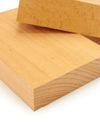
Beech
Plain looks, but a solid performer
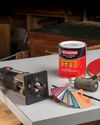
Working with PLASTIC LAMINATE
Adding a durable, smooth, and colorful surface to your work
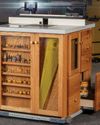
High-Tech ROUTER TABLE
A state-of-the-art shop essential
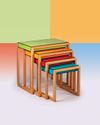
Albers-Inspired NESTING TABLES
A colorful array of Bauhaus utility

Desktop ORGANIZERS
Mini modules for your modern workspace
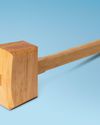
Joiner's MALLET
A hard-hitting shop hammer

Battery-backed biscuiting
DeWalt 20V Max XR Biscuit Joiner
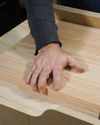
Crosscut SLED
A basic build of a crucial table saw accessory
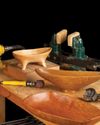
Power-carving BOWLS
Tools and techniques for sculpting

Library STEPS
Mitered box joints give rise to an updated classic